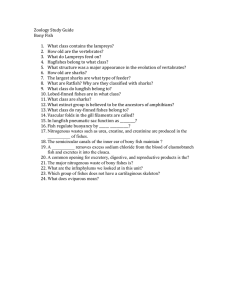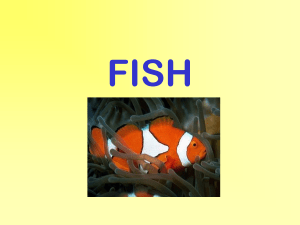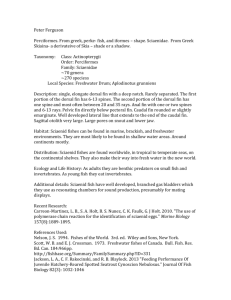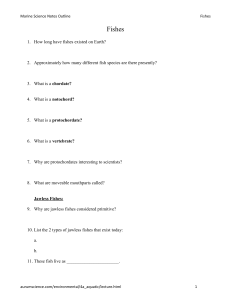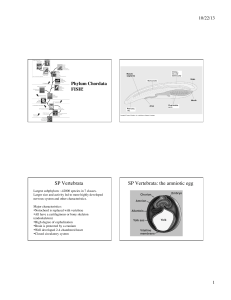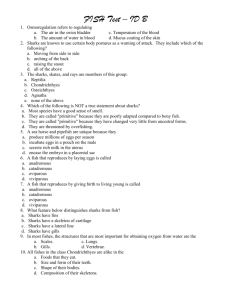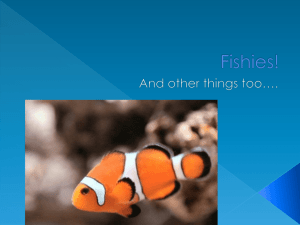Shark Vocabulary: Definitions and Terms
advertisement
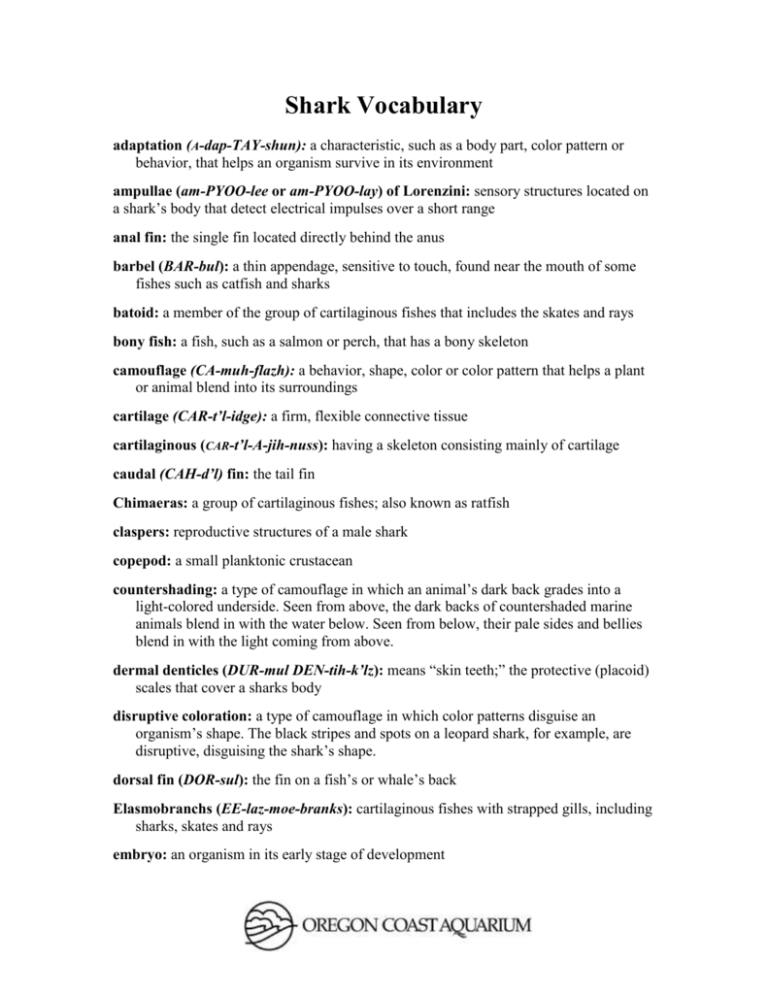
Shark Vocabulary adaptation (A-dap-TAY-shun): a characteristic, such as a body part, color pattern or behavior, that helps an organism survive in its environment ampullae (am-PYOO-lee or am-PYOO-lay) of Lorenzini: sensory structures located on a shark’s body that detect electrical impulses over a short range anal fin: the single fin located directly behind the anus barbel (BAR-bul): a thin appendage, sensitive to touch, found near the mouth of some fishes such as catfish and sharks batoid: a member of the group of cartilaginous fishes that includes the skates and rays bony fish: a fish, such as a salmon or perch, that has a bony skeleton camouflage (CA-muh-flazh): a behavior, shape, color or color pattern that helps a plant or animal blend into its surroundings cartilage (CAR-t’l-idge): a firm, flexible connective tissue cartilaginous (CAR-t’l-A-jih-nuss): having a skeleton consisting mainly of cartilage caudal (CAH-d’l) fin: the tail fin Chimaeras: a group of cartilaginous fishes; also known as ratfish claspers: reproductive structures of a male shark copepod: a small planktonic crustacean countershading: a type of camouflage in which an animal’s dark back grades into a light-colored underside. Seen from above, the dark backs of countershaded marine animals blend in with the water below. Seen from below, their pale sides and bellies blend in with the light coming from above. dermal denticles (DUR-mul DEN-tih-k’lz): means “skin teeth;” the protective (placoid) scales that cover a sharks body disruptive coloration: a type of camouflage in which color patterns disguise an organism’s shape. The black stripes and spots on a leopard shark, for example, are disruptive, disguising the shark’s shape. dorsal fin (DOR-sul): the fin on a fish’s or whale’s back Elasmobranchs (EE-laz-moe-branks): cartilaginous fishes with strapped gills, including sharks, skates and rays embryo: an organism in its early stage of development filter feeder: an organism that eats by filtering, or straining, small particles of food from the water fin: an appendage of an aquatic animal (fish or whale) used mainly to swim, steer or maintain balance gestation (ges-TAY-shun): the process of development from conception to birth gill: an organ specialized for the exchange of gases between an animal’s blood and the surrounding water habitat: the place where an organism lives; its home hydrodynamic (HIE-droh-die-NA-mik): how something’s shape interacts with water when moving. For sharks, a hydrodynamically efficient shape reduces drag and makes swimming easier. invertebrate (in-VER-tuh-brut): an animal without a backbone lateral line: a row of sensory structures that runs the length of a fish, helping it sense movement in the water nares (NA-reez) [plural: naris]: a pair of nostrils nictitating (NIK-tih-TAY-ting) membrane: a protective eyelidlike structure that slides over the eye operculum (oe-PER-cyoo-lum): the protective gill cover of bony fishes organism: a living thing, such as a plant or an animal oviparous (oe-VIH-puh-rus): an animal that produces eggs that develop within the mother’s body and hatch outside the mother’s body. The developing fish get their nourishment from an attached egg yolk. ovoviviparous (OE-voe-vih-VIH-puh-rus): an animal that produces eggs that develop within the mother’s body and hatch inside the mother. Before hatching, developing fish get their nourishment from an attached egg yolk. pectoral (PEK-toh-rul) fins: a pair of fins located on the sides of an aquatic animal’s body just behind the head pelagic (pe-LA-jik): pertaining to the region that includes all offshore, or open water, areas of the ocean from the low tide mark and out pelvic fins: a pair of fins located on the back underside of a fish phytoplankton (FIE-toe-PLANK-tun): photosynthesizing members of the plankton placoid (PLA-koid) scales: protective scales that cover a shark’s body, also known as dermal denticles plankton (PLANK-tun): organisms suspended in water that drift with the currents and swim only weakly or not at all predator: a animal that kills and eats other animals prey: an animal that is killed and eaten by a predator remora: a family of fishes adapted for commensal living with large fishes, particularly sharks school: a group of one species of fish swimming together shellfish: an aquatic animal that has a shell species (SPEE-seez) [singular and plural]: a group of organisms that have common physical structures and can interbreed and produce fertile young spiracle: in certain fishes, a respiratory opening, varying in size, on the back part of the head above and behind the eye swim bladder: a gas-filled sac inside a bony fish’s body that helps it to regulate its buoyancy ventral: the underside of an animal’s body vertebrate (VER-tuh-brut): a member of the subphylum Vertebrata (VER-tuh-BRAH-tah), a groups of animals that have a segmented spinal column. Mammals, fishes, birds, reptiles and amphibians are vertebrates. viviparous (vih-VIH-pah-russ): an animal that produces living young from the mother’s body. Before birth, the developing young receive nourishment from the mother’s bloodstream. water column: the area in the water between the ocean surface and the ocean floor zooplankton (ZOE-uh-PLANK-tun): nonphotosynthesizing members of the plankton, mostly animals
